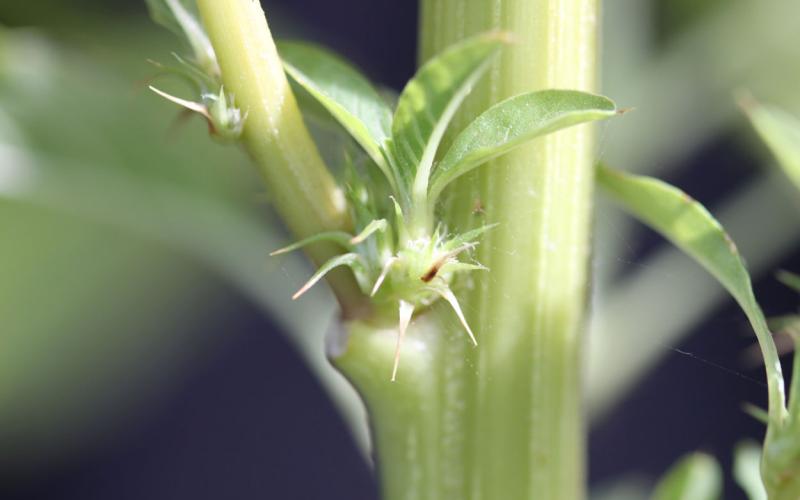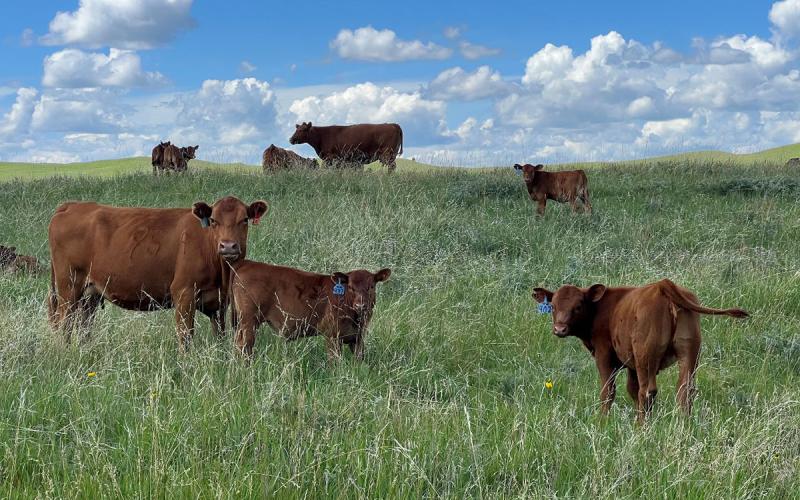Written collaboratively by Eric Jones, Graig Reicks, Philip Rozeboom, Jill Alms, and David Vos.
Disease Overview
White or bleached plants can be seen among Canada thistle growing across South Dakota (Figure 1). These thistle are infected with Pseudomonas syringae pv. Tagetis (commonly referred to as white thistle disease). White thistle disease is caused by bacteria that produce a toxin, which prevents the production of chloroplasts (green pigment), leading to the white, bleached look (Figure 2). White thistle disease needs relatively high humidity and temperatures to persist (Xin et al. 2018). Therefore, infected plants may not be present every year nor be evident in the same field.
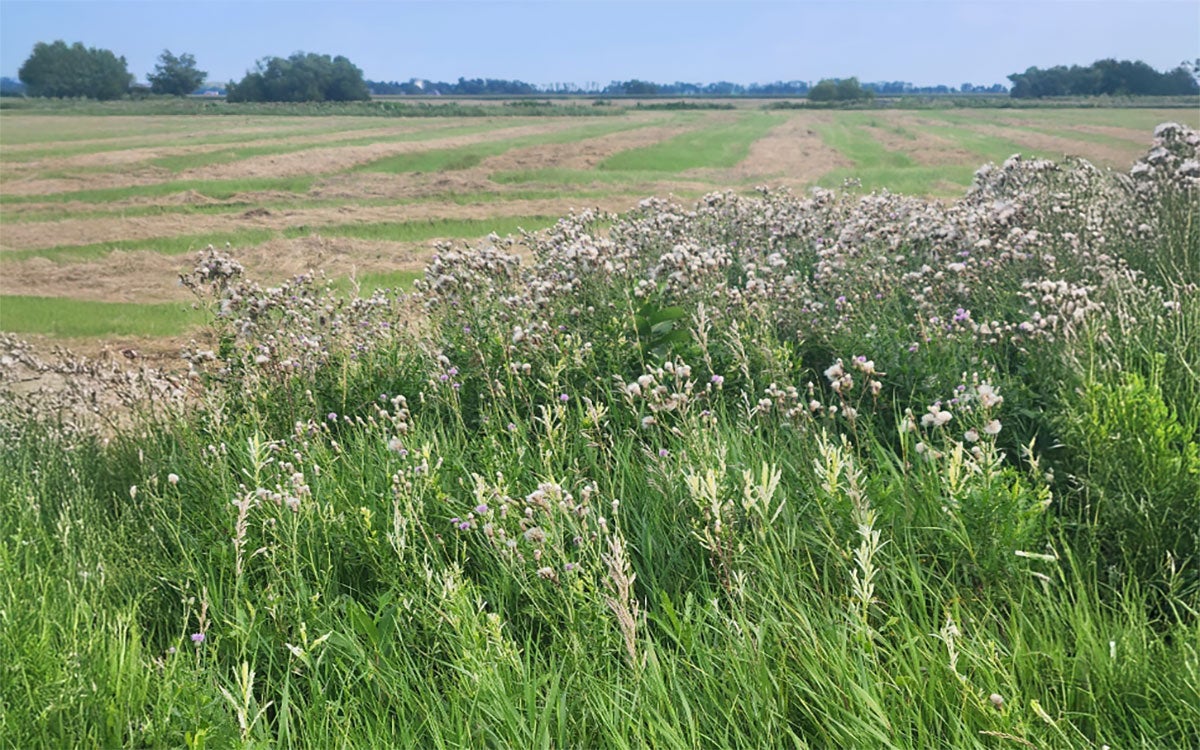
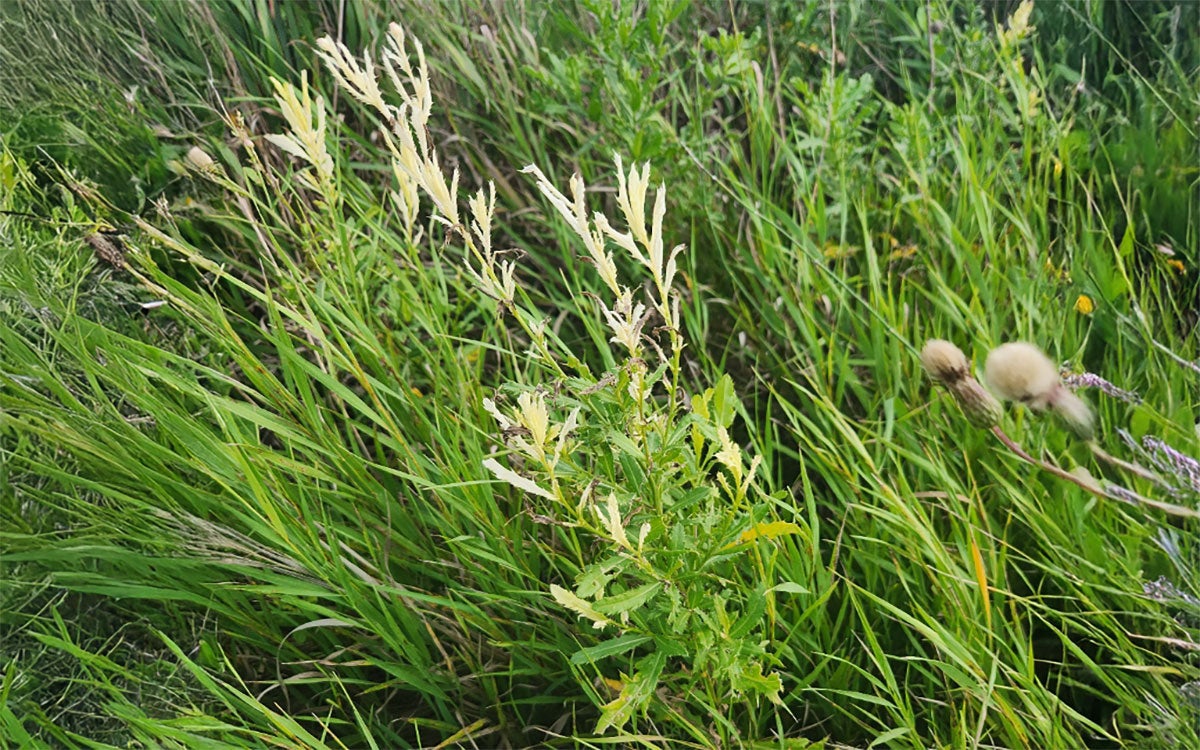
Management Implications
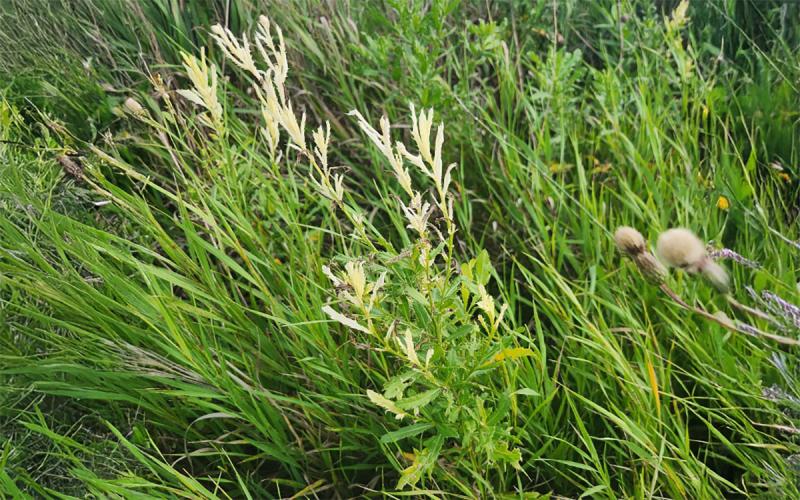
Canada thistle plants infected with white thistle disease exhibit significant reductions in both growth and seed head compared with non-infected plants (Figure 3). Efforts have been made to extract bacteria from plants infected with white thistle disease for use as a biological control tactic (Gronwald et al. 2002; Tichich and Doll 2006). These extracts did what was expected and reduced both the height and seedhead production of treated plants. However, the extractions and applications are costly, and the shelf life is short due to the living nature of bacteria. While white thistle disease provides “free” management of Canada thistle, this bacteria is unlikely to appear every year or in significant quantities for consistent management. In return, Canada thistle plants should still be managed with tactics from all sectors (biological, cultural, chemical, and mechanical) to ensure effective management is achieved.
References
- Gronwald JW, Plaisance KL, Ide DA, Wyse DL (2002) Assessment of Pseudomonas syringae pv. tagetis as a biocontrol agent for Canada thistle. Weed Sci 50:397–400
- Tichich R, Doll JD (2006) Field-based evaluation of a novel approach for infecting Canada thistle (Cirsium arvense) with Pseudomonas syringae pv. tagetis. Weed Sci 54:166–1714
- Xin XF, Kvitko B, He SY (2018) Pseudomonas syringae: what it takes to be a pathogen. Nature Reviews Microbiology 16:316–328
